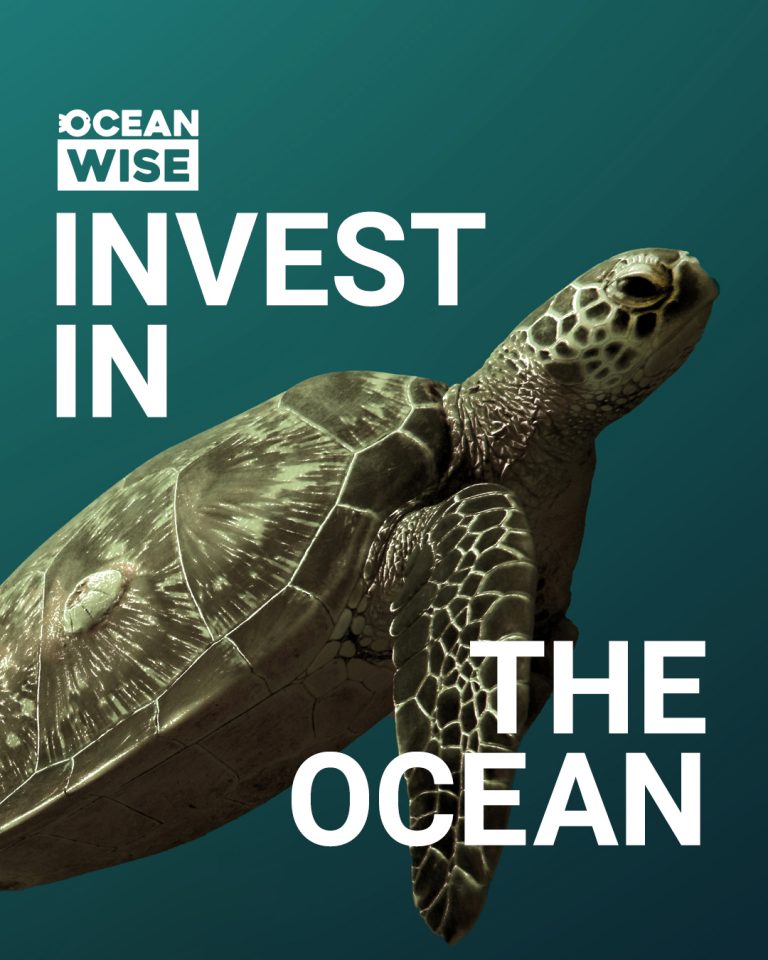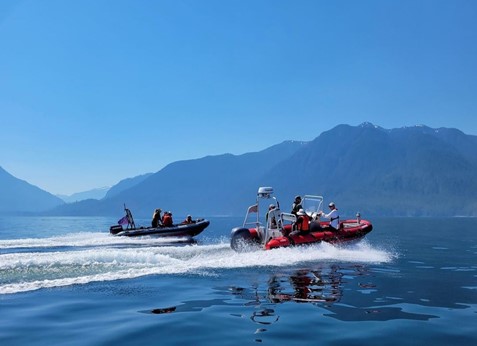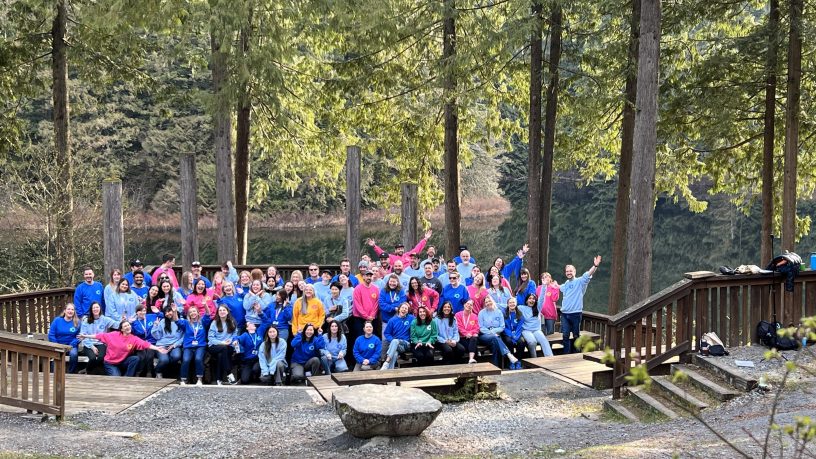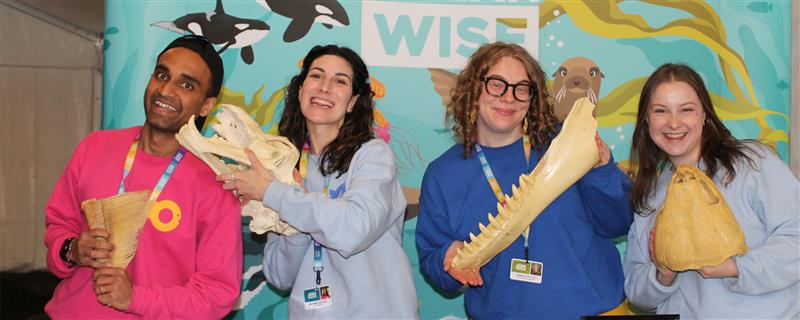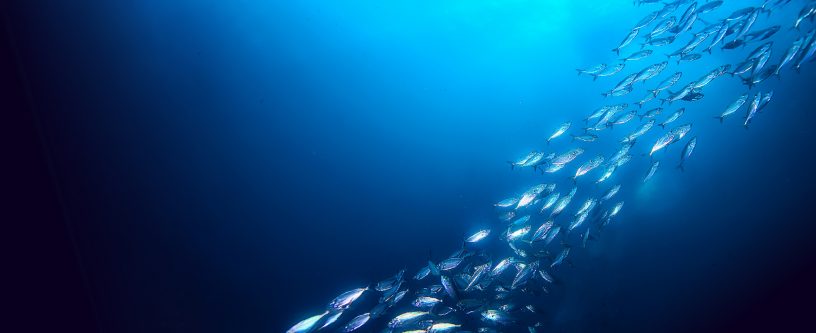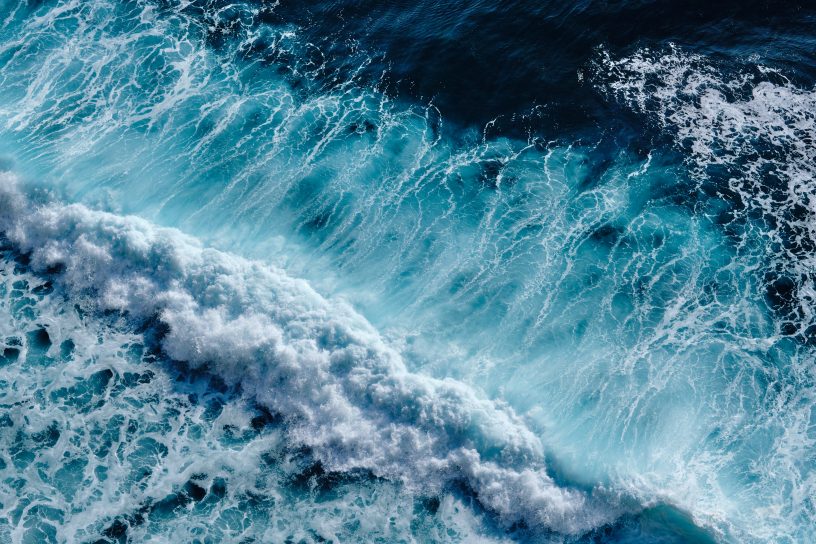
Ocean Wise Explains: Aquaculture Recommendations
Sustainable seafood (including fish, invertebrates, and aquatic plants like seaweed) can be both wild caught or produced in aquaculture systems (also known as farming).
Ocean Wise has recommendations covering both methods of production, but the science behind how we make recommendations varies between the two methods.
This blog explores how we recommend seafood grown in freshwater and saltwater aquaculture systems.

A History of Aquaculture
Aquaculture is the process of cultivating animals and plants in aquatic environments. Did you know aquaculture produces over half the seafood we consume globally (FAO 2020)?
While aquaculture has been around for thousands of years, in China there is evidence of carp farming since 1100 BC , the last century has seen an explosion of aquaculture production across the world’s oceans and inland waters (Hishamunda & Subasinghe, 2003). It is the fastest growing food producing sector in the world and between 1990 and 2018 aquaculture production grew by an astonishing 527% (FAO 2020).
Aquaculture provides direct employment for over 20 million people globally, and in producing 116 million tonnes annually (in 2018), it puts food on the table for millions of families (FAO 2020). Just like farming on land, aquaculture can have a broad spectrum of overall impacts on the environment, due to differences in the methods of production, and the species farmed.

How Does Ocean Wise Seafood Assess Aquaculture Products?
Every Ocean Wise seafood recommendation is the result of a sustainability assessment that scores the environmental performance of the fishery or aquaculture operation.
Where sustainable aquaculture is concerned, it’s all about minimizing inputs into the system in order to minimize harmful outputs that may result in undesirable impacts to adjacent species and/or habitats. Species that can be farmed without the use of feed or therapeutants like chemicals and medicines to keep them healthy tend to perform better environmentally than those that do.

Aquaculture Seafood Assessment
The majority of our farmed seafood recommendations are based on seafood assessments written by the Monterey Bay Aquarium’s Seafood Watch (SFW) program using their Standard for aquaculture species. This program’s Standards are considered global best practice for development of sustainable seafood recommendations programs. Each assessment evaluating the environmental sustainability of a specific farmed seafood. OWS also recommends some eco-certifications farmed seafood, where benchmarking of the eco-certification’s assessment Standard to the Seafood Watch Standard is possible. We will look at these recommendations in detail in a subsequent blog. The SFW Standard assesses aquaculture across 10 key criteria:
- Data – is there high quality information available about the overall operation’s ecological impacts?
- Effluent – what waste products flow from the farm? Is wastewater treated?
- Habitat effects – does the farm directly harm sensitive or critical habitats through its operation of siting?
- Chemical use – are harmful chemicals used through the production process?
- Feed – is the farmed species fed or unfed? If fed, is the feed sourced sustainably?
- Escapes and introduced species – what is the level of risk associated with potential escapes of the farmed species into the surrounding environment?
- Disease, pathogen and parasite interaction – what is the likelihood of diseases or parasites within the farm impacting wild populations?
- Source of stock – is the species sustainably sourced for the farming operation?
- Predator and wildlife mortalities – are predator and wildlife interactions kept to a minimum?
- Escapes of secondary species – what is the level of risk regarding the escape of secondary species (e.g. live feed or parasites)?

Interpreting the Final Score
The scope of aquaculture recommendations can vary greatly from species to species. Some reports assess a single method for a single species globally, and some are more specific to a country or even province. Understanding the difference in scope across all aquaculture assessments can be confusing, so if you ever have questions, we encourage you to reach out to us!
Some aquaculture recommendations can be tied to a method and a species globally, for example, oysters, farmed worldwide:

Some reports can even be as broad as covering a single method of farming seafood globally, regardless of the species or location. One such assessment is the Global recirculating aquaculture systems (RAS) report which contains two recommendations, one for global RAS without wastewater treatment (final score 6.63) and one for global RAS with wastewater treatment:

Finally, many reports are incredibly specific, covering a single species cultivated in a single method in a given location. For example, below is the final score for all open-net pen farmed salmon from Norway:

Each assessment evaluates seafood (or in some cases, just the production system as we saw for RAS) across the 10 criteria outlined in the SFW Standard. The final score across all criteria determines the Ocean Wise recommendation – anything scoring above 5.5 out of 10 is Ocean Wise recommended with no critical scores, anything below or with critical scores is not.

Choosing Sustainable Seafood
When it comes to choosing sustainable farmed seafood, understanding the relative impacts of your choices can make all the difference. The top performers of farmed seafood globally are bivalves – oysters, mussels, clams and scallops –year-round these are a great choice in farmed seafood both in terms of sustainability and your wallet. Mussels are a great affordable sustainable choice.

Head to our website to check out our farmed seafood recommendations!
Aquablog written by the Ocean Wise Seafood Science Team.
References:
FAO. 2020. The State of World Fisheries and Aquaculture 2020. Sustainability in action. Rome. https://doi.org/10.4060/ca9229en
Hishamunda, N.; Subasinghe, R. 2003. Aquaculture development in China: the role of public sector policies. FAO Fisheries Technical Paper. No. 427. Rome, FAO.
Seafood Watch Consulting Researcher. 2020. Oysters Worldwide: Bottom and Off-bottom Culture. Seafood Watch, Monterey Bay Aquarium, California.
Seafood Watch Consulting Researcher. 2020. Global Recirculating Aquaculture Systems, All Species. Seafood Watch, Monterey Bay Aquarium, California.
Seafood Watch Consulting Researcher. 2017. Atlantic Salmon Marine Net Pen Norway. Seafood Watch, Monterey Bay Aquarium, California.
Posted February 2, 2021 by Ocean Wise

